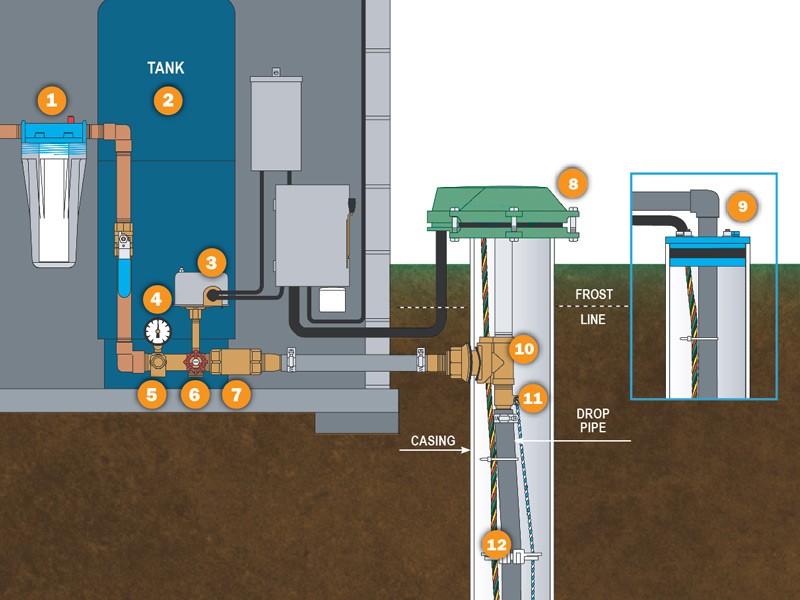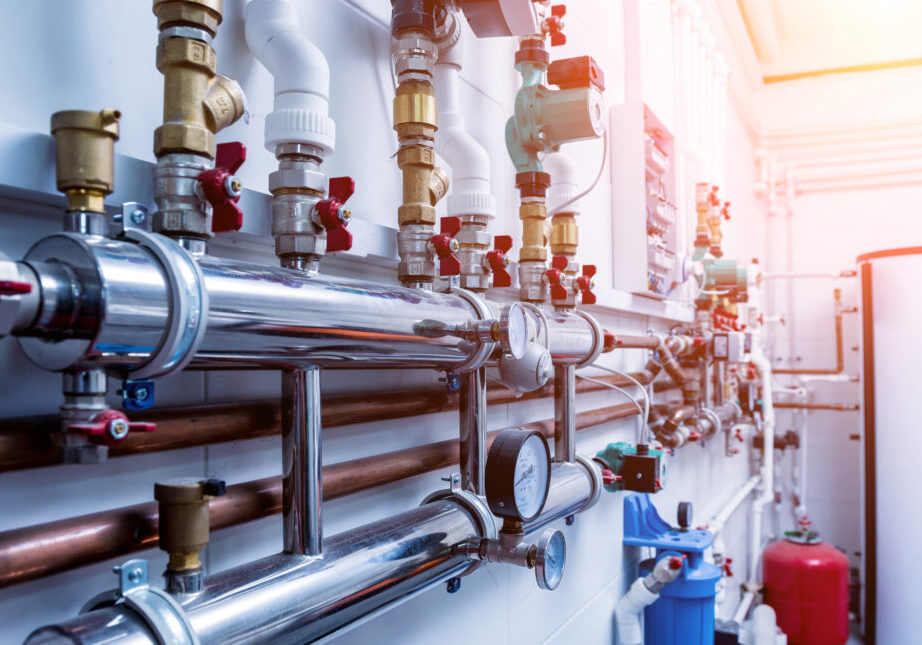Key Components of Your Home's Plumbing System
Key Components of Your Home's Plumbing System
Blog Article
Have you been on the lookout for answers around The Inner Workings of Your Home's Plumbing?

Understanding exactly how your home's pipes system functions is important for each homeowner. From delivering clean water for drinking, cooking, and showering to safely removing wastewater, a well-maintained pipes system is important for your household's health and convenience. In this comprehensive guide, we'll explore the elaborate network that composes your home's plumbing and deal tips on upkeep, upgrades, and handling typical issues.
Introduction
Your home's pipes system is greater than just a network of pipes; it's an intricate system that guarantees you have access to clean water and efficient wastewater elimination. Recognizing its elements and exactly how they work together can help you protect against pricey repair work and ensure whatever runs smoothly.
Standard Elements of a Plumbing System
Pipes and Tubes
At the heart of your pipes system are the pipes and tubing that lug water throughout your home. These can be made from various products such as copper, PVC, or PEX, each with its advantages in terms of sturdiness and cost-effectiveness.
Components: Sinks, Toilets, Showers, etc.
Fixtures like sinks, commodes, showers, and tubs are where water is used in your house. Comprehending just how these fixtures attach to the plumbing system helps in detecting troubles and planning upgrades.
Shutoffs and Shut-off Points
Shutoffs control the circulation of water in your pipes system. Shut-off valves are vital during emergencies or when you require to make fixings, allowing you to separate parts of the system without interfering with water flow to the whole house.
Water System System
Key Water Line
The main water line links your home to the local water system or an exclusive well. It's where water enters your home and is distributed to different components.
Water Meter and Pressure Regulator
The water meter procedures your water use, while a pressure regulator makes sure that water flows at a secure pressure throughout your home's plumbing system, stopping damages to pipes and fixtures.
Cold Water vs. Hot Water Lines
Recognizing the difference in between cold water lines, which provide water directly from the main, and warm water lines, which lug heated water from the hot water heater, assists in repairing and planning for upgrades.
Drain System
Drain Pipes Pipes and Traps
Drain pipelines carry wastewater away from sinks, showers, and bathrooms to the drain or septic system. Catches protect against sewage system gases from entering your home and also catch debris that might trigger blockages.
Ventilation Pipes
Ventilation pipelines permit air right into the drain system, preventing suction that can reduce drain and cause traps to vacant. Correct ventilation is important for keeping the honesty of your plumbing system.
Significance of Proper Water Drainage
Making certain proper drainage protects against back-ups and water damage. Frequently cleaning up drains and maintaining catches can stop costly repairs and prolong the life of your plumbing system.
Water Furnace
Kinds Of Water Heaters
Hot water heater can be tankless or standard tank-style. Tankless heaters warm water on demand, while containers keep warmed water for instant use.
Just How Water Heaters Link to the Pipes System
Comprehending how hot water heater connect to both the cold water supply and warm water distribution lines assists in detecting issues like inadequate hot water or leakages.
Upkeep Tips for Water Heaters
Routinely purging your water heater to eliminate debris, checking the temperature setups, and inspecting for leaks can prolong its life-span and improve energy effectiveness.
Usual Plumbing Problems
Leakages and Their Reasons
Leakages can occur because of maturing pipes, loose fittings, or high water stress. Addressing leaks promptly avoids water damages and mold growth.
Blockages and Clogs
Obstructions in drains pipes and commodes are frequently caused by flushing non-flushable products or a build-up of oil and hair. Using drain displays and bearing in mind what drops your drains can avoid blockages.
Indicators of Pipes Problems to Expect
Low water pressure, slow-moving drains pipes, foul odors, or uncommonly high water expenses are indicators of potential pipes troubles that should be dealt with quickly.
Pipes Maintenance Tips
Regular Assessments and Checks
Set up yearly plumbing examinations to capture problems early. Try to find indicators of leaks, rust, or mineral accumulation in taps and showerheads.
DIY Maintenance Tasks
Easy tasks like cleansing tap aerators, looking for toilet leakages using dye tablets, or protecting subjected pipelines in cool climates can prevent major plumbing problems.
When to Call a Specialist Plumbing Technician
Know when a pipes concern needs specialist expertise. Attempting complex repair work without appropriate understanding can cause even more damages and higher fixing prices.
Updating Your Pipes System
Factors for Upgrading
Upgrading to water-efficient fixtures or changing old pipelines can boost water quality, lower water costs, and raise the worth of your home.
Modern Pipes Technologies and Their Advantages
Check out innovations like clever leakage detectors, water-saving commodes, and energy-efficient hot water heater that can conserve cash and minimize ecological effect.
Expense Considerations and ROI
Calculate the upfront costs versus long-term financial savings when thinking about plumbing upgrades. Several upgrades spend for themselves via lowered energy expenses and fewer repairs.
Ecological Influence and Preservation
Water-Saving Fixtures and Devices
Setting up low-flow faucets, showerheads, and toilets can substantially minimize water usage without sacrificing efficiency.
Tips for Reducing Water Use
Straightforward routines like fixing leakages without delay, taking much shorter showers, and running full loads of laundry and dishes can preserve water and reduced your utility bills.
Eco-Friendly Pipes Options
Think about lasting plumbing products like bamboo for floor covering, which is durable and environmentally friendly, or recycled glass for countertops.
Emergency situation Preparedness
Actions to Take During a Pipes Emergency
Know where your shut-off valves lie and exactly how to switch off the water system in case of a burst pipeline or major leak.
Relevance of Having Emergency Contacts Useful
Keep call information for neighborhood plumbing technicians or emergency solutions readily offered for quick feedback during a pipes dilemma.
Do It Yourself Emergency Fixes (When Appropriate).
Temporary repairs like using air duct tape to patch a dripping pipe or putting a bucket under a dripping tap can minimize damages until an expert plumbing gets here.
Conclusion.
Recognizing the anatomy of your home's pipes system empowers you to preserve it effectively, saving money and time on repair work. By adhering to regular upkeep regimens and staying educated about contemporary pipes technologies, you can guarantee your pipes system operates successfully for years to find.
HOW YOUR PLUMBING SYSTEM WORKS
Which Pipes Do What?
Blue lines = fresh water supply entering the building
Red lines = hot water supply entering the building
Grey lines = pipes carrying waste away from the building and venting pipes carrying gases away from the building (through the roof)
YOUR MAIN PLUMBING SYSTEMS
There are two main plumbing systems that support your home s basic plumbing needs one that brings clean water into your home, and one that sends dirty water away from your home. Connected to the toilet, bath, shower, and other faucets in your home, these two systems keep your water flowing in the right directions.
ACCESSING FRESH WATER
Fresh and clean water is brought into your home through the main water supply line . Filtered through one pipe, this water is pressured to flow into the various fixtures in your home at any given time.
This water can be sourced from a well located on your property, a pond or river (mostly cottages), or, as in most cases, from the city s municipal water treatment centre. However, it is important to note that water that is untreated, such as the water siphoned from ponds or rivers, may not be safe to drink. Personal water supplies always need to be treated for hardness and contaminants before consumed.
MUNICIPAL WATER SUPPLIES
Improve taste and odour
Remove sediment
Eliminate hardness
Reduce chlorine
COLD WATER SUPPLY VS. HOT WATER SUPPLY
Cold water flows into your home or building through the service line, which then distributes hot or cold water to your fixtures. This line is most commonly run through a central column that runs floor to floor. Hot water runs in short and straight pipes as the longer the pipeline, the more heat that will be lost in the transfer. Having shorter pipes also allows residents to access hot water more quickly.
WASTE WATER SYSTEM
Your wastewater system is divided into two parts pipes that send wastewater away from your home and venting pipes that send sewer gas away from your home. Sewage water travels through pipes that flush the water and waste towards local sewers that are operated and managed by your city or town. Most sewer systems rely on gravity to move the wastewater to where it needs to go.
The further away from your toilet or sink, the larger wastewater pipes become. This allows for waste to be disposed of from various parts of your home or business at once without pipe blockages. The angle and flow of these pipes are also essential for keeping your waste pipes clear of build up.
https://harrisplumbing.ca/how-your-home-plumbing-system-works/

HOW YOUR PLUMBING SYSTEM WORKS
Which Pipes Do What?
YOUR MAIN PLUMBING SYSTEMS
There are two main plumbing systems that support your home s basic plumbing needs one that brings clean water into your home, and one that sends dirty water away from your home. Connected to the toilet, bath, shower, and other faucets in your home, these two systems keep your water flowing in the right directions.
ACCESSING FRESH WATER
Fresh and clean water is brought into your home through the main water supply line . Filtered through one pipe, this water is pressured to flow into the various fixtures in your home at any given time.
This water can be sourced from a well located on your property, a pond or river (mostly cottages), or, as in most cases, from the city s municipal water treatment centre. However, it is important to note that water that is untreated, such as the water siphoned from ponds or rivers, may not be safe to drink. Personal water supplies always need to be treated for hardness and contaminants before consumed.
MUNICIPAL WATER SUPPLIES
COLD WATER SUPPLY VS. HOT WATER SUPPLY
Cold water flows into your home or building through the service line, which then distributes hot or cold water to your fixtures. This line is most commonly run through a central column that runs floor to floor. Hot water runs in short and straight pipes as the longer the pipeline, the more heat that will be lost in the transfer. Having shorter pipes also allows residents to access hot water more quickly.
WASTE WATER SYSTEM
Your wastewater system is divided into two parts pipes that send wastewater away from your home and venting pipes that send sewer gas away from your home. Sewage water travels through pipes that flush the water and waste towards local sewers that are operated and managed by your city or town. Most sewer systems rely on gravity to move the wastewater to where it needs to go.
The further away from your toilet or sink, the larger wastewater pipes become. This allows for waste to be disposed of from various parts of your home or business at once without pipe blockages. The angle and flow of these pipes are also essential for keeping your waste pipes clear of build up.
https://harrisplumbing.ca/how-your-home-plumbing-system-works/
We had been shown that write-up about Anatomy of a House: Understanding the Components from a pal on another web address. Feel free to set aside a second to share this post if you appreciated it. Thank you so much for going through it.
Or Book Technician Here Report this page